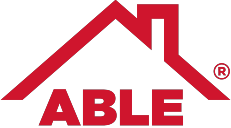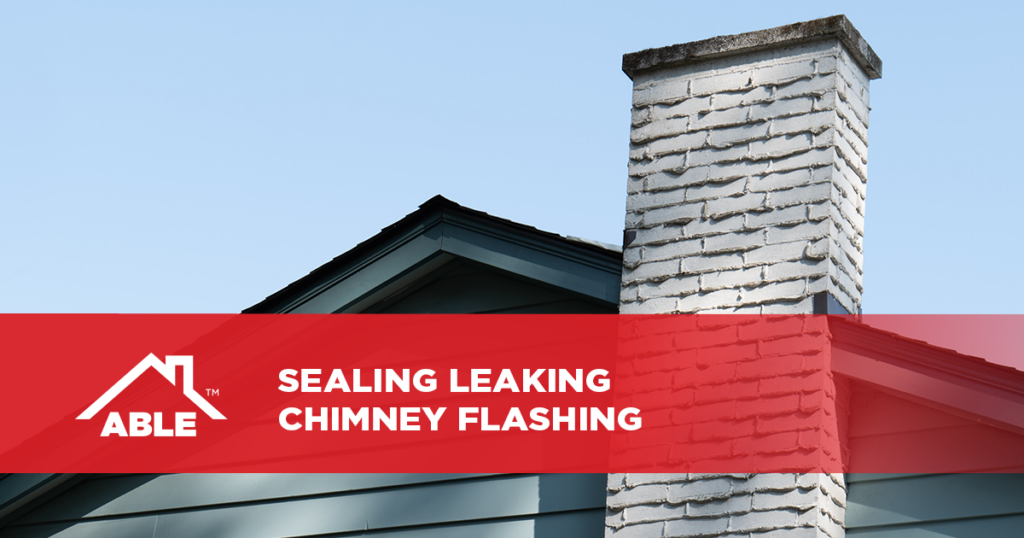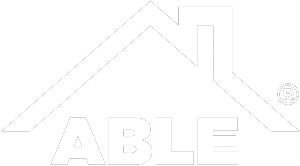Protecting the exterior of your home is an important task for all homeowners. The exterior of any building protects the interior and its contents from damage caused by rain, wind, snow, ice, and whatever other natural elements impact our homes. This structure is mainly composed of your roof, siding, and windows.
Some residences that have a chimney require a bit more maintenance than those without. This is because your chimney has an important function in your home’s structure and can be susceptible to damage that could impact the integrity of your entire home. Your chimney could become a source of potential leaks that could cause water damage to the interior of your home. If you suspect any leaks or have seen clear signs of water damage such as stains, spots, or streaks, this could be a sign that you need to have your chimney flashing replaced as soon as possible.
What is chimney flashing?
It’s helpful to understand what chimney flashing is and the role it plays in the structure of your home. Chimney flashing helps to create a waterproof seal that protects both your chimney and roof from the risk of water damage. It acts similar to the way weather stripping helps your windows and doors prevent wind and other unwanted natural elements from entering your home. There are three main components of chimney flashing:
· Step flashing. This is an L-shaped piece of metal that is installed under the roof shingles and along the brickwork of your chimney.
· Counter flashing. Also known as cap flashing, this L-shaped piece covers the step flashing and is embedded into a groove cut into the chimney. This piece is typically the one that can be seen from the ground.
· Base flashing. This component is used at the spot between the vertical surface of your chimney and the roofing surface. It helps to prevent water penetration.
These components, together with caulk, create a waterproof seal, that when properly installed, can last up to 30 years. Flashing can be one of the hardest parts of a roofing job and truly requires a professional skill level. If it is not properly installed, odds are you will experience problems in the future. When one or all of these components fail, you can experience leaks. These leaks can cause significant damage to the interior of your home over time.
Signs your chimney flashing needs repair
While your chimney flashing could last 30 years, you also need to consider a few factors. These factors include the local conditions of your area. If you are in an area with high winds or experience severe rain or snow each year, this can impact the overall structure of your chimney flashing. You’ll also want to consider your chimney itself. Wear and tear and other damages can impact the overall integrity of the chimney itself. The materials used can also play a role in the true lifespan of your chimney flashing. There are a few signs to look for when considering the current health of your chimney flashing, including:
· Any obvious leaks inside your home or outside of the chimney
· Rust stains within the firebox
· Discoloration of any bricks surrounding or composing your chimney
· Water stains — especially on the ceiling or along the walls adjoining the chimney
· Clear gaps in caulking
Faults in the chimney flashing are one of the biggest contributors to leak issues due to the professionalism necessary to install them correctly.
Other potential leak sources
While issues with the chimney flashing are often the main cause of unwanted leaks, the structure of the chimney itself can also contribute to potential leaks. There is the element of extreme weather that impacts your home, but also regular temperature changes that we experience year after year. Weather changes can create cracks in your brickwork over time. This can allow moisture in during good weather, and cold weather can freeze the moisture, which expands and widens the space. Signs of masonry leaks include:
· A slow, visible leak
· Chimney leaks without any staining of the ceiling or surrounding wall
· Brick faces popping off
Condensation can also mask itself as a leak. This often happens when your home relies on a gas furnace or water heater that is vented through an older chimney. These leaks can happen when there is no rain or when temperatures are cooler. It is important to understand the true source of the leak before investing in any repairs.
Checking for damage
As a homeowner, there are several elements of your home you or a professional should check at least once a year to ensure that there are no concerns. This includes the integrity of your roof and chimney materials. This can help you detect any leaks before they can turn into a significant
issue that can impact you financially. Leaks caused by faulty chimney flashing usually occur in late summer or early fall due to thunderstorms that bring high winds and rain.
Winter can also be problematic, with its heavy snow and ice. If you notice any leaks around these peak seasons, it can be a clear issue with your flashing. A professional roofer can help determine the true cause of the leak. It could be from the roofing material itself, so it is important to have a clear source of damage before investing in repairs or replacements.
Fixing leaky chimney flashing
The repairs necessary to sealing a leaky chimney flashing can vary. If caught early enough, and if the chimney flashing was originally installed correctly, you may just need to have the area resealed with a polyurethane caulk or another type of flashing sealant. If there is actual damage or wear and tear, such as warping or flaring of materials, it may be worn out beyond repair and require replacement. If you need your chimney flashing replaced, a professional will:
· Remove existing flashing, as well as the surrounding shingles
· Install the base flashing
· Install the step flashing and shingles in such a way that water is directed away from the chimney and roof
· Install front, back, and side flashing
· Install counter/cap flashing and caulk, using the correct type of caulking
Proper installation will help ensure that if you do need your chimney flashing completely replaced, it is worth the investment. Whether you need fresh caulking to seal any gaps or require a complete replacement of your chimney flashing, both steps will help stop any water leaks. This helps to prevent any potential water damage to your home’s interior.
Can I repair my leaking chimney flashing?
Many homeowners prefer to try DIY methods when it comes to repairs around the home. While this is a great way to potentially save money and learn a new skill, it isn’t always the best option when it comes to necessary repairs, especially when your roofing is involved. While DIY is possible, it is not always the best option for many homeowners due to several potential concerns.
It is important to first consider your safety. To assess any possible leaks in your chimney flashing, you will need to access your roof. This puts you high in the air and on a surface that can be slippery, hot, and unpredictable. A professional is trained on the safest methods for roof and chimney repair. They also have the right equipment to get on the roof and safely remain there.
You also need to consider the materials and tools necessary to complete the task. You’ll have to ensure that you are working with the right materials, or you could end up causing more damage, which can lead to a more expensive repair. You’ll also want to factor in the time you need to spend working on the project. Additionally, the surface of your roof can quickly become hot, and this can make certain materials more difficult to work with. Someone without professional training will likely need more time to complete the project versus a professional who already knows exactly how to get the job done.
Expertise is also a huge factor. Water leaks can be tricky. You could falsely assume a leak is coming from your chimney flashing when it is coming through at a different entry point. This means you’ve spent your time and money on a repair that might not have been necessary, and the true cause of the water damage is still an issue, furthering the damage inside your home.
Trust in the professionals
Leaking chimney flashing can cause significant damage to your roofing material as well as the interior of your home. If you suspect you have a leak, it is most beneficial to call in a professional. They will be able to safely and accurately assess your chimney flashing and surrounding roofing material. They can help determine the true cause of any leaks and if you would benefit most from a repair or full replacement of your chimney flashing system.
Able Roofing can provide the advice and assessment you need to determine your current chimney flashing condition. Don’t hesitate to contact us with any questions or if you want to schedule someone to come assess your situation.








